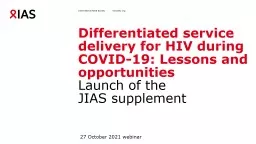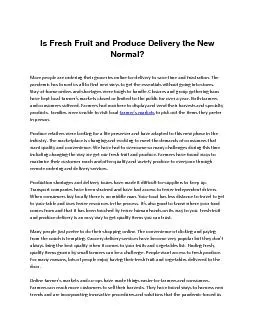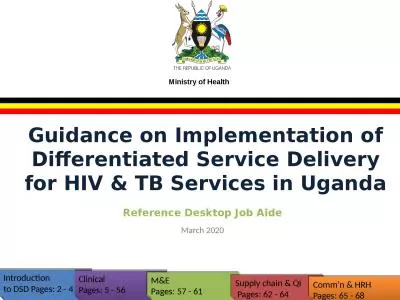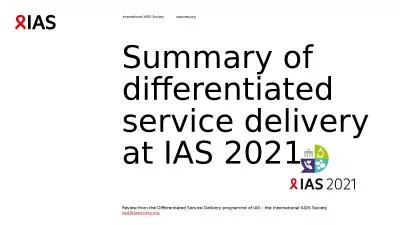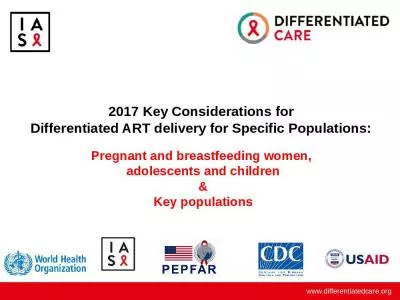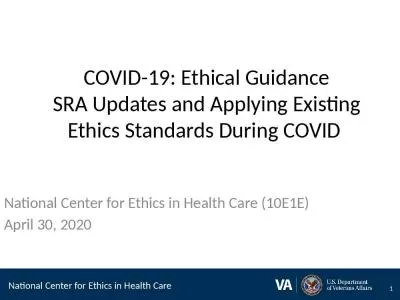PPT-Differentiated service delivery for HIV during COVID-19: Lessons and opportunities
Author : FriendlyFlamingo | Published Date : 2022-08-04
Launch of the JIAS supplement 27 October 2021 webinar Differentiated service delivery for people on secondline antiretroviral therapy Evidence from KwaZuluNatal
Presentation Embed Code
Download Presentation
Download Presentation The PPT/PDF document "Differentiated service delivery for HIV ..." is the property of its rightful owner. Permission is granted to download and print the materials on this website for personal, non-commercial use only, and to display it on your personal computer provided you do not modify the materials and that you retain all copyright notices contained in the materials. By downloading content from our website, you accept the terms of this agreement.
Differentiated service delivery for HIV during COVID-19: Lessons and opportunities: Transcript
Download Rules Of Document
"Differentiated service delivery for HIV during COVID-19: Lessons and opportunities"The content belongs to its owner. You may download and print it for personal use, without modification, and keep all copyright notices. By downloading, you agree to these terms.
Related Documents

